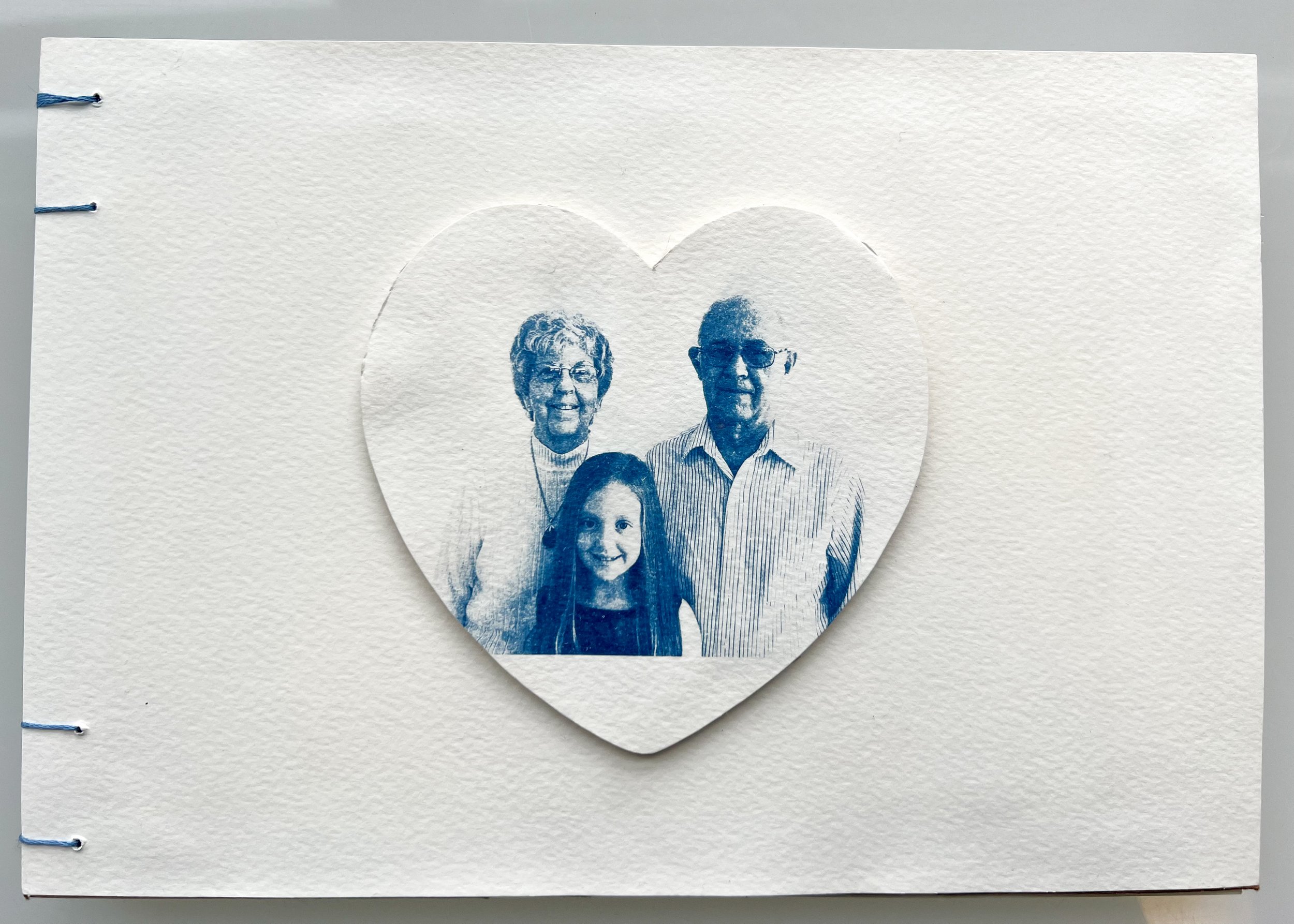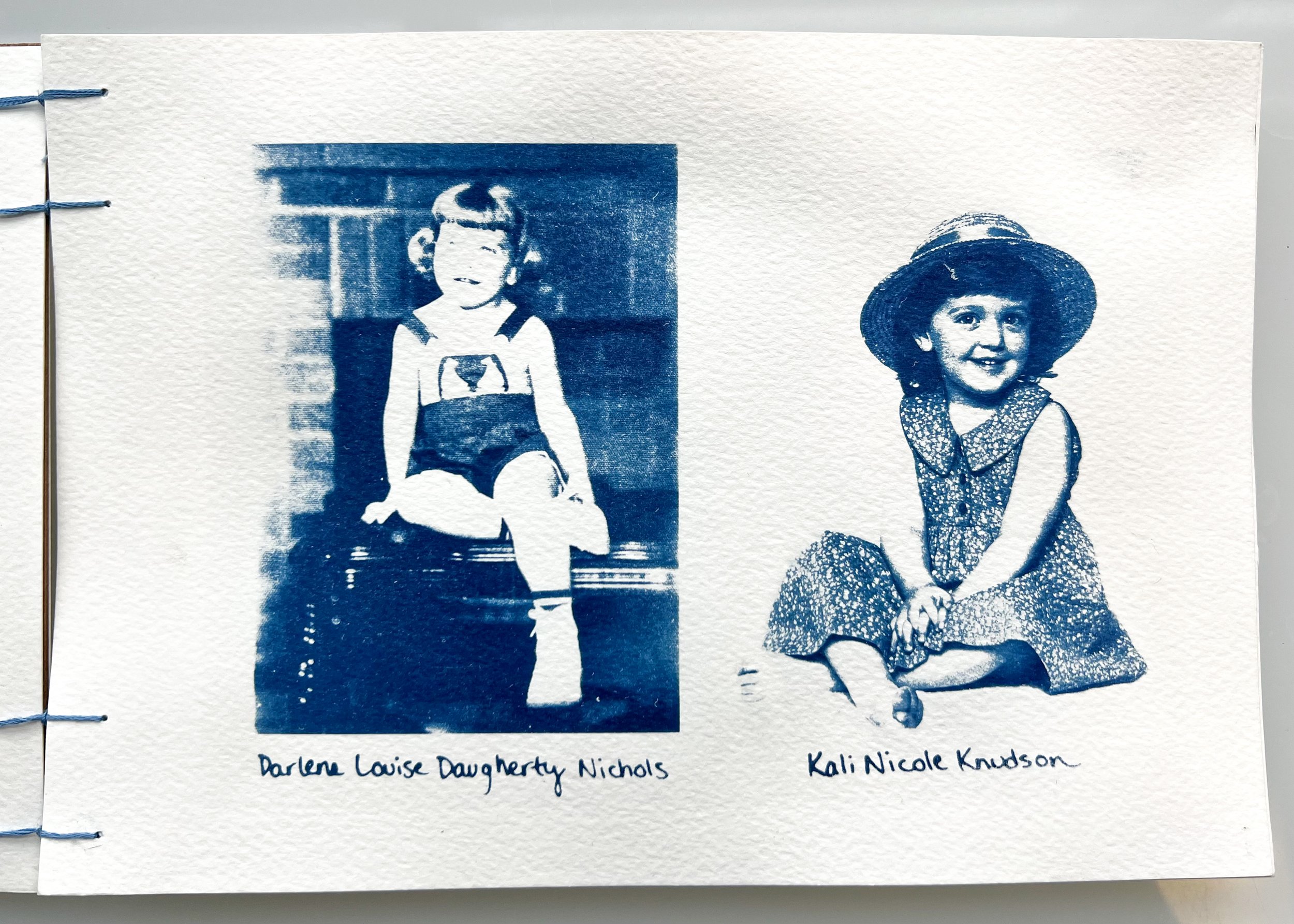Alternative Photography Processes
I first discovered alternative photography processes when I decided to take a class on them at Ohio University in early 2021. At that point, I had only worked with digital photography, so this opened up a whole new world for me. For those who don’t know what these are, the majority of alternative processes were typically used over 100 years ago by early photographers, and they’re essentially any non-traditional or non-commercial photographic printing processes. They usually involve coating thicker papers in a chemical solution, exposing them in UV light, and washing them in a process similar to film prints. The following are some of my projects in four different alternative processes, but there are a lot more out there to discover if you’re interested!
Cyanotypes
My most recent project with cyanotypes was a book I made for my mom that explores the relationship between me and my maternal grandmother. She was a very artistic person, and we had so much in common. The main reason I went with cyanotypes for this project was because my grandma’s favorite color was blue and so is mine. I strived to create a book that remembered her, what she loved, and what we shared. She was the scrapbooker of the family, always taking photos and making art for the family to remember every moment, big or small. It’s a very personal piece, from us painting, to our Halloween memories, to some pieces of blue I keep to remember her.
The process was very time consuming, but I found it to be therapeutic. Taking digital photos of tiny family photos from the 1930s and beyond, restoring them in photoshop, arranging them, coating the paper, pressing the finished pages, hand stitching the final book together, all honored our memories and experiences.
Cyanotypes were actually the first alternative process I was introduced to, and one of the readings we covered in class was called “The Blue of Distance” by Rebecca Solnit, which also helped inspire this project.
Kallitypes
I chose to center this project around light shining through windows, since that is one of the ways these prints can be exposed.
For this project, I initially did a black and white photoshoot on my DSLR. Once I narrowed the photos down to these five, I printed out negatives that were roughly 5x7” each on translucent paper and exposed them in UV light. After the initial exposure, kallitypes involve a more extensive process of developing, washing, and fixing the prints than a lot of other processes, so this was a very time consuming project—but it was SO worth it!
Gum Bichromate (Tricolor)
This is the only type of alternative process I’ve worked with that’s not monochrome, and actually involves three layers of color. These images were created from three digital negatives each, using photos I took at one of my first big car shows when I was in high school. The tricolor aspect of this process reminded me of older color photos, so I really enjoyed using older cars as the focus of this project.
Van Dyke Brown
For this project, the goal was to tell a story by creating prints from layers of hand drawn negatives. I took reference photos, put them in photoshop, broke the photo into four different shades, and hand drew a negative for each layer of each photo. Yes, it took forever!
The brown tones of the process really reminded me of old, sepia family photos, so I decided to focus on nostalgia for this series. The story behind these prints is based on my fond memories of the drive to my grandparents' house on snowy days when I was younger.















